#dziady
Text
"zemsta, zemsta, zemsta na wroga, z bogiem i choćby mimo boga" BANGER would do millions on here
#polishposting#polblr#musze wciaz przeczytać dziady 3 do bo sie od 2 miesięcy zabieram do tego#przeraża mn długość#ale adas slayed with this one#polska literatura#pollit#polish literature#dziady#dziady III#adam mickiewicz#romantyzm
495 notes
·
View notes
Text

Dziady
212 notes
·
View notes
Text
polscy romantycy próbując nie pierdolnąć swoich postaci piorunem

#romantyzm#romanticism#polish literature#pol lit#pollit#lit#literature#classics#literatura#juliusz słowacki#adam mickiewicz#dziady#balladyna
134 notes
·
View notes
Text
Literaccy mutualsi, zróbmy kiedyś wspólnie obrzęd Dziadów pls pls
Ja będę Guślarzem
Przynieście proszę tylko smolny pęk łuczywa i kocioł wódki, a o resztę się nie martwcie xxx
64 notes
·
View notes
Text
slavic cult of the dead - complaints and curiosities
as you know, a great part of knowledge we possess about the beliefs of old slavs comes from sources much less educational in nature and more aimed at lamenting and complaining and ridiculing the pagan ways. Adam Fischer gives us a plethora of such wonderful compaints in his 1923 work Fête des morts where he gathers examples from various chronicles and sermons, regarding the slavic beliefs surrounding their dead.

Cosmas of Prague laments in his chronicles regarding old Czechia: “So they would bury their dead in forests and meadows and then organise games in accordance with pagan ways on the crossroads, seemingly to soothe the souls, but they would also play ungodly jokes and call upon the spirits, and having put on masks, they would go wild in celebration themselves: these disgusting blasphemies the young duke (Bretislav I) would have to root out.”
A sermon from Czechia from XII century mentions that people would worship their dead relatives as deities (home deities, a belief spread widely across slavic people) and “call upon angels giving them false names”
Similarly, Al-Mas'udi mentioned that Slavs would burn the bodies of their dead and then venerate them as ancestral deities.
Other Arabic source mentions that Slavs would visit the burial site of their dead on the first anniversary of their passing and offer them 20 jugs filled with honey, and then gather around the grave to have a feast before heading back home.
Sources regarding Rus lamented that people would heat up bath houses for the dead: leave them towels and bowls of food and drink, and pour ash on the ground around the bath house to see whether the dead would leave the marks of their presence in it.
The 1551 Synod laments that people in Russia would still gather at the graves and have feasts in the name of their ancestors, and the custom remained strong for years to come, as in 1634 Adam Olearius had a chance to observe it and describe in detail during his travels.
A 1497 Polish sermon mentions that people still practiced lighting small fires for the souls of their dead in the belief that the souls would gather around the fire to warm themselves.
Another text from the XV century complains that there are sinners who not only worship some foreign false gods but also organise pagan plays and games during which they summon demons; then the text laments that there are people who, during that period, refuse to sleep underneath a roof, refure to speak to other people, or only walk barefoot. Some would leave parts of their supper as offerings to demons (most likely house spirits and ancestral deities) and some would refuse to wash the dishes after supper on Good Friday so that “souls could eat from them”
342 notes
·
View notes
Text
Konrad jest trans alegorią
24 notes
·
View notes
Text
Dziady
Maciej Dębiński, 24.10.2023
W imieniu drużyny cheerleaderek z Liceum Ogólnokształcącego w Kłykciach Lewych mamy zaszczyt ogłosić termin tegorocznego wspólnego obrzędu dziadów.
A oto on: 31 października - dziady, czyli wtedy, co zawsze.
Wydarzenie odbędzie się w kaplicy na cmentarzu św. Judasza Iskarioty i ze względu na chwilowy brak wykwalifikowanego guślarza we wsi zostanie poprowadzone przez Organistę Alojzego, z pomocą cheerleaderek.
Obrzęd rozpocznie się o godzinie 22.00. Dzieci do lat sześciu wchodzą za darmo, pozostali również, jednak mile widziane są ofiary w postaci wódki, ziół, półproduktów pochodzenia zwierzęcego, kart Pokémon oraz mieszkańców Kłykci Prawych.
Do zobaczenia na dziadach!
#kłykcie#kłykcie lewe#poland#polish#polska wieś#wieś#polska#polishcore#polish tag#polskaposting#polandposting#polishposting#polblr#polski tumblr#dziady#unreality#oc#oc writing#mockumentary#parody
25 notes
·
View notes
Text
my three girlfriends. and yes, they smoke weed
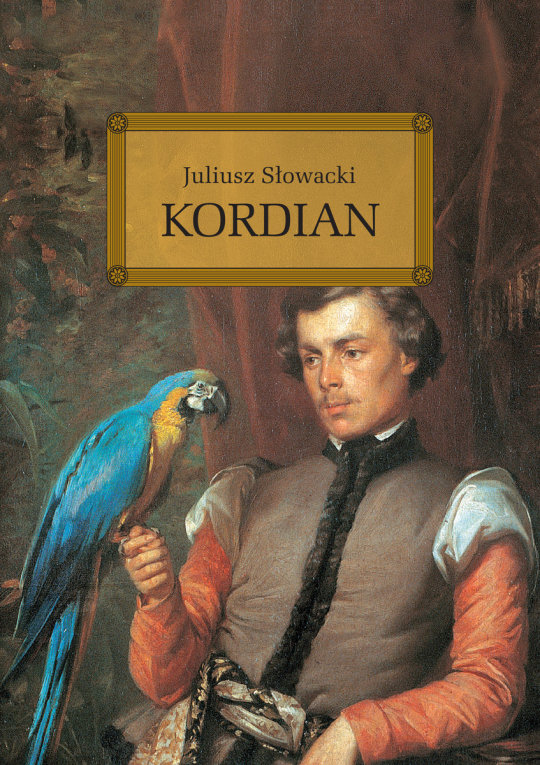


#polscy romantycy kiedy powiesz im zeby przestali tak podobnie nazywać swoje postacie#kordian#konrad wallenrod#dziady#pollit#polska literatura#polish literature#polblr#polishposting#juliusz słowacki#adam mickiewicz
37 notes
·
View notes
Text
me, standing over a display of advent calendars and chocolate santas in local aldi on 31st october: letting christmas encroach into november is surrendering to western capitalist propaganda. november is the true spooky month. it begins with dziady when we invoke ghosts and spirits of our ancestors and ends with andrzejki when we divine our matrimonial future. christmas has no business anytime between the two. i firmly believe we should get up to all kinds of spooky rituals during that period. rip to people thinking spooky season ends on halloween but we slavs are different
the aldi cashier: very well ma'am, does that mean you won't be interested in 50% discount if you purchase two chocolate santas instead of one
#halloween#dziady#andrzejki#poland#truth to be told spooky season can be year round in our hearts#but my agenda is to extend the Official Spooky Season from september all the way through to the end of november#post sponsored by local aldi selling advent calendars since the beginning of october#also best wishes to those two catholic nuns who disapproved strongly when our school did a fun andrzejki event#if doing bogus numerology for shit and giggles back then was bad it's a good thing they don't see my atheist ass now#my stuff#nebra original
178 notes
·
View notes
Text
fully embracing the romantic hero inside of me (pathetic and full of anguish)
#romanticism#romantic hero#romantyzm#bohater romantyczny#kordian#werter#konrad wallenrod#giaur#konrad#hrabia henryk#werther#don juan#cierpienie młodego wertera#the sorrows of young werther#nie-boska komedia#juliusz słowacki#adam mickiewicz#dziady#zygmunt krasiński#goethe#johann wolfgang von goethe#lord byron#george gordon byron#pollit#pol lit#polish literature#literature#polish romanticism#romantyzm polski
179 notes
·
View notes
Photo


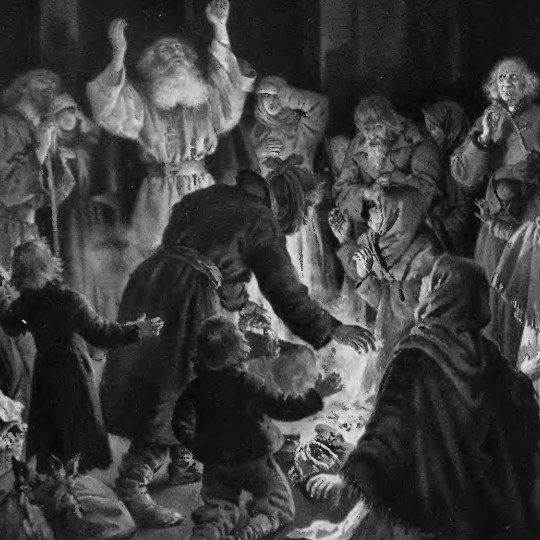
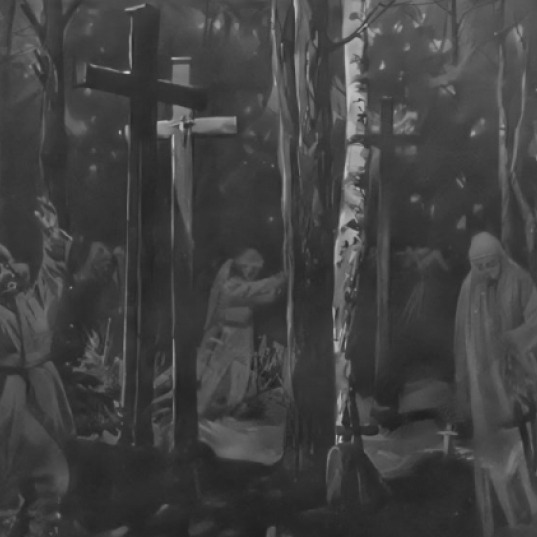
DZIADY
(literally "grandfathers, eldfathers" // sometimes translated as Forefathers' Eve)
• Belarusian — Dzyady
• Russian — Dedy
• Ukrainian — Didy
• Polish — Dziady
👻 A term in Slavic folklore for the spirits of the ancestors and a collection of pre-Christian rites, rituals and customs that were dedicated to them. The essence of these rituals was the "communion of the living with the dead", namely, the establishment of relationships with the souls of the ancestors, periodically returning to their headquarters from the times of their lives. The aim of the ritual activities was to win the favor of the deceased, who were considered to be caretakers in the sphere of fertility. The name "dziady" was used in particular dialects mainly in Poland, Belarus, Polesie, Russia and Ukraine (sometimes also in border areas, e.g. Podlachia, Smoleńsk Oblast, Aukštaitija), but under different other names (pomynky, przewody, radonitsa, zaduszki) there were very similar ritual practices, common among Slavs and Balts, and also in many European and even non-European cultures.
👻 Within the framework of grandfather's rituals, the souls coming to "this world" had to be hosted in order to secure their favour and at the same time help them to achieve peace in the hereafter. The basic ritual form was feeding and watering of souls (e.g. honey, groats, eggs, forge and vodka) during special feasts prepared in houses or cemeteries (directly on graves). A characteristic feature of these feasts was that the people who ate them dropped or poured some of their food and drinks on the table, floor or grave for the souls of the deceased. In some areas, however, the ancestors also had to be given the opportunity to bathe (a sauna was prepared for this) and warm up.This last condition was fulfilled by lighting fires, whose function is sometimes explained differently. They were supposed to light the way for wandering souls so that they would not get lost and could spend the night with their loved ones.
👻 In the Slavic tradition, depending on the region, the feast of the deceased was celebrated at least twice a year. The main dziady were the so-called spring dziady and autumn dziady:
• Spring dziady were celebrated around 1 and 2 May (depending on lunar phase).
• Autumn dziady were celebrated on the night from October 31 to November 1, also known as All Souls' Day, which was a preparation for the autumn day of the dead, celebrated around November 2.(depending on lunar phase).
👻 To this day, in some regions of eastern Poland, Belarus, Ukraine and part of Russia, it is cultivated to carry on the graves of the dead a symbolic meal in clay pots. The majority of Slavic neo-pagan and rodnover movements also cultivate the dziady.
👻 Christianity, on the one hand, fought against pagan rituals, successively banning them, and on the other hand, it tried to adapt some of them in an attempt to christianize them. In the case of the dziady, both the Catholic and the Orthodox Church tried to marginalize and then eliminate pagan festivals by introducing into their squares (at the same or similar moments of the annual cycle) Christian festivals and practices). In Poland it's All Saint's Day at November 1, which is celebrated by most Polish people instead of dziady.
#some ppl were interested in *slavic halloweeen*#Dziady#Halloween#slavic culture#slavic#slavs#pagan#slavic folklore#polish folklore#russian folklore#ukrainian folklore#poland#russia#belarus#ukraine#posted by me#🔮
159 notes
·
View notes
Text
My Western, mostly American and Anglo-Saxon friends: Halloween
My Celtic friends: Samhain
Me, a Slav: DZIADY
But seriously, I really recommend you to read about Dziady (or the Forefathers’ Eve, as that’s how it is sometimes translated into English). It is traditionally celebrated in Belarus, Ukraine, Baltic countries, and some parts of Poland as well. Similarly to Celtic Samhain, it is also believed that during Dziady our ancestors come back to the world of the living. As the descendants, we are obligated to welcome them properly, commemorate them, and learn from whatever advice they may have for us. It's really cool, Adam Mickiewicz, the national poet of Poland, Lithuania and Belarus, even wrote a drama inspired by this feast!
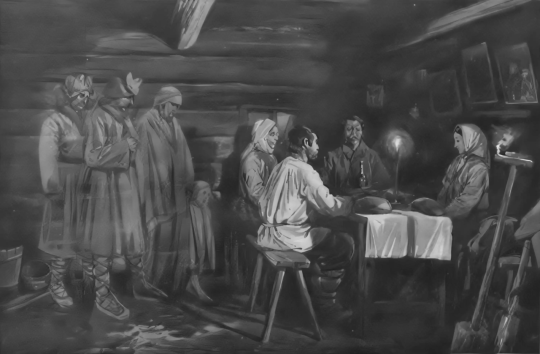
(“Dziady, pradziady, przyjdzcie do nas!” Depiction of dziady ritual in Belarus, Stanisław Bagieński. Source: Wikipedia)
More under this link:
#eastern Europe#eastern european#slavic countries#baltic countries#poland#belarus#ukraine#lithuania#latvia#estonia#halloween#samhain#dziady#the forefathers’ eve#slavic culture#dziady jesienne#ancestral cult#october 31st#november 1st
178 notes
·
View notes
Text


Starzec idzie na Oppenheimera, a Karusia i lud na Barbie
#adam mickiewicz#romantyczność#dziady#forefather's eve#polish tumblr#polish literature#polska literatura#polskie lektury#poezja#polish dark academia#oppenheimer#robert oppenheimer#barbieheimer#romantyzm
50 notes
·
View notes
Text
Dziady

Yes, this was drawn and, supposed to be posted on the forefathers' eve, but i completely forgot, and now it's december -_-"
Alicja's clothes aren't any from any specific region, just loosely based on a couple of different ones
#my art#phantasmagoria#oc: alicja#character illustration#dziady#forefathers' eve#slavic art#slavic folklore#polishposting#polish folklore#polish folk costume#strój ludowy#slavic paganism#landscape painting#pagan art#oc art
29 notes
·
View notes
Text
Dziady cz. III – Adam Mickiewicz
vs
Lolek. Opowiadania o dzieciństwie Karola Wojtyły – Piotr Kordyasz
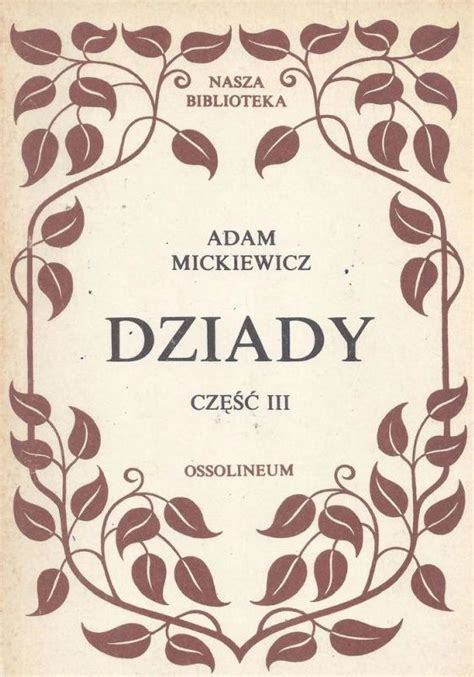

#od jury#lektury#lektury szkolne#literature#polish literature#polish posting#polbr#literatura polska#polish#poland#polska#szkoła#liceum#brackets#polls#tournament#bitwa lektur szkolnych#dziady#dziady cz 3#dziady 3#forefathers eve#lolek#jan paweł ii#karol wojtyła#proszę bądźmy cywilizowani na poście z papieżem ok#ankieta
42 notes
·
View notes
Text

Czesław Borys Jankowski (1862-1941)
Illustration from `Dziady`
9 notes
·
View notes